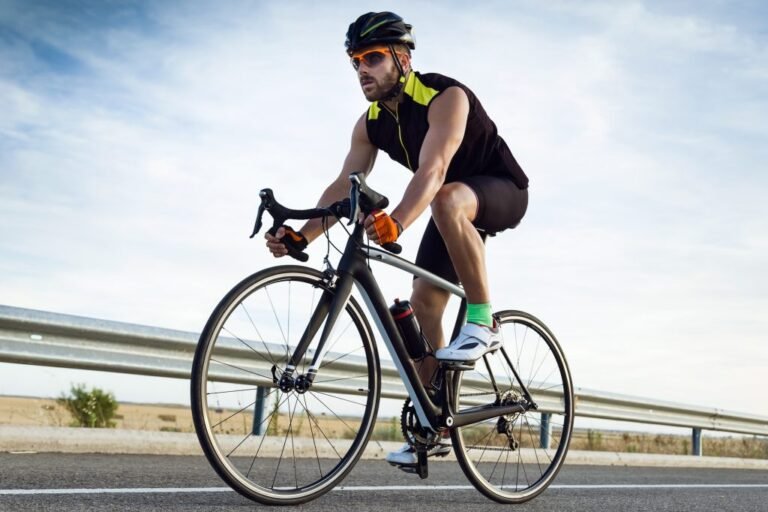Cycling has seen a steady rise across cities, suburbs, and small towns alike. Riders are trading four wheels for two as a practical response to fuel costs, congestion, and the desire for a more active routine. What started for many as a recreational weekend habit has evolved into an everyday method of getting around.
This shift has brought new questions about what riders should expect and how to stay prepared. Owning a bike goes beyond the initial purchase. From upkeep and security to navigating traffic and dealing with unexpected accidents, there’s more to consider than just the route.
Keep reading as we explore why cycling is gaining popularity, what risks riders face, and how to manage the responsibilities that come with it. Whether you’re already riding or considering it, these tips and insights will help you stay informed and make smart choices on two wheels.
What’s Driving the Cycling Surge
Bikes are becoming part of everyday mobility. Municipal investments in protected lanes and traffic-calmed routes have given more people the confidence to make the switch. Cities across the US are rolling out protected bike lanes, car-free paths, and parking incentives for cyclists.
People want efficient ways to move that also support physical and mental health. For short distances, riding often beats driving in both speed and cost. With more hybrid work models and flexible commuting hours, riders are finding it easier to fit cycling into their routines.
Climate responsibility also plays a role. Bicycles provide a lower-emission alternative without the complexity of public transport schedules or the expense of ride-shares.
Ownership Expenses and Risk Protection
Once a bike is purchased, the costs don’t stop there. Tires wear out. Chains stretch. Brake pads degrade. Whether it’s a budget-friendly commuter or a high-end road model, regular maintenance is part of ownership.
Locks, lights, helmets, pumps, multitools, and panniers can all add up. Repairs at local shops vary depending on region and bike type, but unexpected costs pop up frequently for anyone riding regularly.
The stakes are even greater with higher-end or custom bikes. Replacing stolen or damaged components isn’t cheap. This is where insurance comes into the conversation. Riders who want extra protection from theft, crash damage, and personal liability often look for providers that specialize in cycling.
One such provider is Velosurance, which offers tailored policies that cover incidents many general insurers don’t. Having dedicated coverage can help reduce out-of-pocket expenses, especially for riders navigating traffic-heavy environments.
The average bicycle insurance cost depends on a few factors, including the value of the bike, coverage limits, location, and selected add-ons. While many still rely on homeowners or renters insurance, those policies often fall short when it comes to crash repairs or international travel with a bike.
Different Riders, Different Habits
Commuters, fitness riders, cargo haulers, and casual weekend cyclists often approach the road very differently. These riding styles shape how bikes are chosen, used, and cared for.
Commuters tend to value reliability and durability. They favor frames that can handle daily mileage, mixed surfaces, and changing weather. These riders usually invest in weather-resistant gear and fenders to stay comfortable during early morning or late evening rides.
Sport and fitness riders, on the other hand, often prioritize speed and performance. Their setups can cost more and require ongoing maintenance to perform at their best. Meanwhile, cargo or family riders lean toward utility-focused bikes with sturdy racks and attachments for hauling goods or passengers.
Each rider type has distinct priorities. Recognizing these differences is the first step toward making informed choices about costs, risks, and protection.
Guarding Against Theft and Damage
Bike theft remains a common issue in cities and college towns alike. Thieves often target even well-secured bikes, particularly those left in predictable spots or locked with basic cable locks.
Avoiding theft means thinking ahead. U-locks, chain locks, and secondary wheel locks reduce risk, especially when used together. Locking the frame and rear wheel to a fixed object and removing any easily detached accessories makes a big difference.
Storing bikes indoors or in monitored locations also helps. Riders who leave their bikes outside overnight should consider frame marking or registration programs that help police return stolen items. Insurance may cover losses, but strong prevention habits will always play the most significant role in keeping bikes safe.
Legal Risks That Catch Riders Off Guard
Cyclists face exposure to legal and medical bills after accidents, especially when another person or vehicle is involved. A rider might be found liable for pedestrian injuries or vehicle damage, even when the incident seems minor.
Without coverage, a single collision could lead to thousands in expenses. Some incidents result in property damage claims, medical costs, or legal consultations. Basic renters or auto insurance rarely extends to bike-specific liability, particularly when bikes are used for commuting or side income (such as courier work).
Factoring in bicycle insurance cost as part of routine expenses can help avoid larger financial shocks later on. Riders who commute daily or ride alongside traffic benefit most from policies that include personal injury protection, liability, and uninsured motorist coverage.
Building Safer Habits for Urban Riding
Sharing space with vehicles, buses, and pedestrians demands extra attention. Riders who blend into traffic need strategies that make them visible and predictable.
Reflective jackets, front and rear lights, and helmet-mounted signals improve visibility. Staying out of blind spots, signaling turns early, and maintaining steady positioning in bike lanes increases safety.
Checking brakes, tire pressure, and chain tension before riding helps to avoid preventable breakdowns. Riders should carry basic repair kits, especially when cycling long distances without access to a shop.
Local laws vary, but common mistakes like riding against traffic or ignoring signals put cyclists at risk. Cities often provide guides or maps that help riders navigate designated paths and learn key regulations.
Where Cycling Culture Is Headed
Cycling isn’t standing still. Tech-enabled accessories like GPS locks, ride trackers, and smart helmets are entering the mainstream. Electric bikes continue to rise in popularity, especially among older adults or those with longer commutes.
Bike-sharing programs and rental fleets have expanded access for those who ride occasionally. Riders in dense neighborhoods often skip ownership altogether in favor of on-demand options.
Some cities are experimenting with policies that discourage car traffic in favor of foot and cycle traffic. This shift brings new life to downtowns and improves air quality in high-traffic zones.
More employers also add secure bike storage, showers, or cash incentives for bike commuters. What once felt fringe is starting to become expected.
Ready to Ride? Make It Safer, Smarter, and More Sustainable
Cycling offers more than just a ride. It delivers independence, savings, and daily movement without gym fees or traffic stress. That said, it’s smart to plan for the challenges just as much as the joys.
Buying the right gear, keeping your bike secure, understanding local laws, and thinking about coverage options can turn a good habit into a reliable one. Riders who factor in maintenance and the full scope of risk are more likely to stay on the road longer, safer, and with fewer unexpected expenses.
Think ahead, ride smart, and keep your setup protected, because good preparation goes a long way when your transportation runs on two wheels.



































